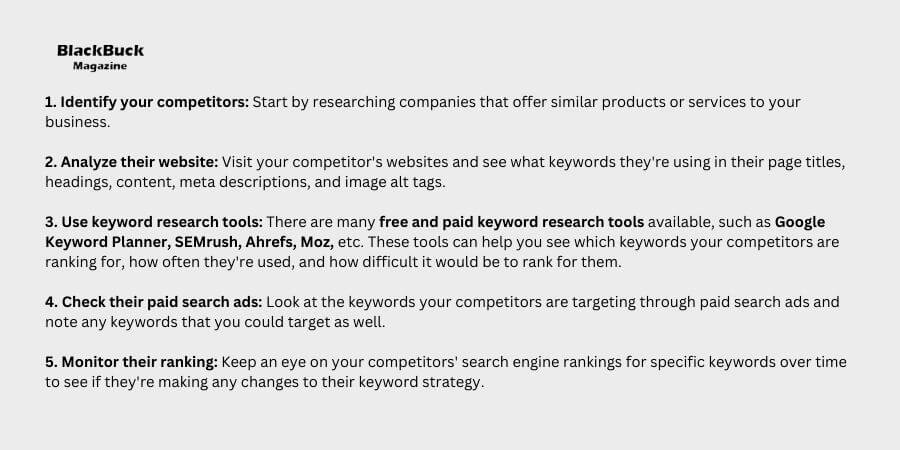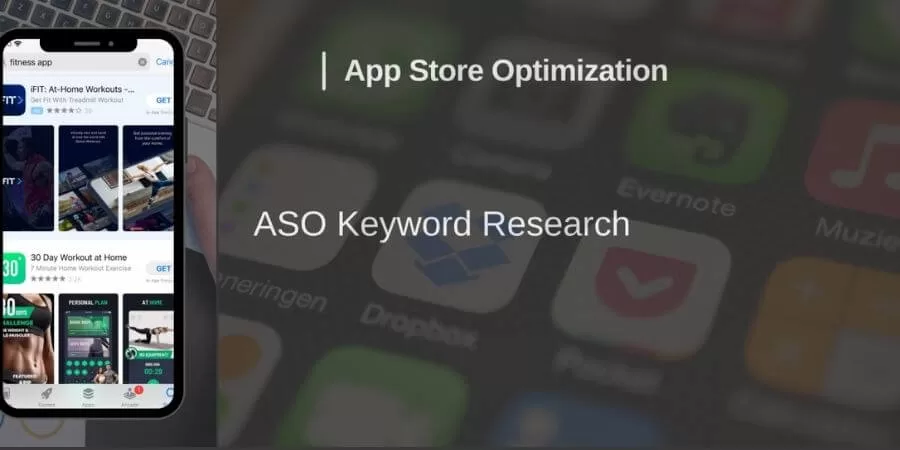Without SEO, you might not even get traffic on your website! And without proper SEO, you might fall behind in the SERPs. To start with SEO, the very first thing you will need to do is find the right keywords for your website. Now, the question is how to do that. Through keyword research!
Don’t know, what it is or how to do keyword research for SEO?
So, no matter how many Google algorithm rolls out, the one thing that will keep your website up in search engine is Keyword research. However, that doesn’t mean you can neglect the algorithm update.
Google and other search engines plan to keep us all on our toes with that, so along with keyword research, keep your content writing and marketing game up too.
Here in this article, you will learn everything about keyword research from what it is and how to do it to its benefits in SEO!
Table of Contents
- What is Keyword Research?
- What are the type of keywords in SEO?
- How to do competitors’ keyword analysis?
- How to do keyword research for the Website?
- How to do Keyword research for ASO (app store optimization)?
- How to do keyword research for Youtube?
- What is Keyword density?
- Final Say on How to do Keyword Research!
Let’s get going then!
What is Keyword Research?
Keyword research is the process of identifying and analyzing words and phrases that people use in search engines to find the information they are looking for.
The goal of keyword research is to understand what people are searching for, how many people are searching for it, and how hard it will be to rank for those terms.
The information gathered during keyword research can then inform and guide various aspects of digital marketing, such as content creation, Content Marketing, search engine optimization (SEO), pay-per-click (PPC) advertising, and more.
There are several steps involved in conducting keyword research:
- Identifying seed keywords: Start by brainstorming a list of potential keywords related to your product or service.
- Analyzing search volume and competition: Use keyword research tools to determine the monthly search volume and the level of competition for each keyword.
- Refining the list: Based on search volume and competition, refine your list of keywords to focus on the ones that have the highest potential for attracting relevant traffic to your website.
- Understanding search intent: Look at the context in which people search for each keyword to determine their search intent. Are they looking for information, a product, or a service?
- Creating keyword-rich content: Use the keywords you’ve researched to create content that is optimized for search engines and provides value to your target audience.
In summary, keyword research is a critical component of digital marketing that can help you understand your target audience and their needs. With the help of keywords, you can identify new opportunities, and create more effective marketing campaigns.
Now as you know, what keyword research is, there’s another you need to know before we move ahead with how to do keyword research!
What are the type of keywords in SEO?
In SEO (Search Engine Optimization), keywords refer to specific words or phrases that describe the content of a webpage and help search engines understand what the page is about.
There are several types of keywords used in SEO, including:
| Keywords Type | Descriptions |
|---|---|
| 1. Broad match keywords: | These are general terms that can match a wide range of search queries. For example, “shoes” would be a broad match keyword. |
| 2. Phrase match keywords: | These are more specific than broad-match keywords and only match exact phrases. For example, “running shoes” would be a phrase match keyword. |
| 3. Exact match keywords: | These are the most specific type of keywords and only match the exact search query. For example, “best running shoes for women” would be an exact match keyword. |
| 4. Long-tail keywords: | These are longer, more specific phrases that are less common but often have a higher intent behind them. For example, “best running shoes for women with flat feet” would be a long-tail keyword. |
| 5. Latent semantic keywords (LSI keywords): | These are keywords that are semantically related to the main keyword and can help search engines understand the context of the content. For example, if the main keyword is “running shoes”, related LSI keywords might include “jogging”, “athletic shoes”, and “sneakers”. |
By targeting the right keywords, websites can improve their search engine rankings, increase traffic, and attract the right audience.
With this, you have an idea about the types of keywords as well. Now, let’s move ahead and take a look at how to do competitors’ keyword analysis!
How to do competitors’ keyword analysis?

Why is it necessary to conduct competitor keyword research/analysis? Well, this will give you a wholesome look at what your competitors are doing and which keywords they are focusing on. To perform a competitor keyword analysis, you can follow these steps:
- Identify your competitors: Start by researching companies that offer similar products or services to your business.
- Analyze their website: Visit your competitor’s websites and see what keywords they’re using in their page titles, headings, content, meta descriptions, and image alt tags.
- Use keyword research tools: There are many free and paid keyword research tools available, such as Google Keyword Planner, SEMrush, Ahrefs, Moz, etc. These tools can help you see which keywords your competitors are ranking for, how often they’re used, and how difficult it would be to rank for them.
- Check their paid search ads: Look at the keywords your competitors are targeting through paid search ads and note any keywords that you could target as well.
- Monitor their ranking: Keep an eye on your competitors’ search engine rankings for specific keywords over time to see if they’re making any changes to their keyword strategy.
By using these methods, you can gain insights into your competitors’ keyword strategies. Once you know about that, you can identify the gaps in your own strategy, and make changes to improve your search engine rankings.
How to do keyword research for the Website?
This is the real part of the keyword research for SEO in the article.
Keyword research is done for many proposes and for many platforms, not just websites. Following this section, you get to learn how to do keyword research for youtube and ASO. To do website keyword research, follow these steps:

- Identify your target audience: Determine who your target audience is and what their needs and interests are.
- Brainstorm seed keywords: Make a list of keywords and phrases related to your product or service.
- Use keyword research tools: Use keyword research tools such as Google Keyword Planner, SEMrush, Ahrefs, or Moz Keyword Explorer to get data on the search volume, competition, and related keywords for each seed keyword.
- Analyze search volume and competition: Evaluate the search volume and competition level for each keyword to determine their potential value. Focus on keywords with high search volume and low competition.
- Refine the list: Refine your list of keywords by eliminating those with low search volume or high competition and prioritizing those with high potential.
- Understand search intent: Analyze the context of each keyword to understand the search intent behind it. Are users looking for information, products, or services?
- Create keyword-rich content: Use the keywords you’ve researched to create optimized content that provides value to your target audience.
- Monitor and update: Regularly monitor your keyword rankings and update your content accordingly to maintain your visibility and relevance in search engines.
By following these steps, you can conduct effective keyword research and create a solid foundation for your digital marketing efforts.
How to do Keyword research for ASO (app store optimization)?
Keyword research is critical in optimizing an app for app store optimization (ASO). Here are the steps to conduct keyword research for ASO:

- Determine your target audience: Understanding your target audience will help you identify the keywords they are using to search for apps like yours.
- Analyze your competitors: Study the keywords used by your competitors to gain insight into what keywords are being used in your app’s category.
- Use keyword research tools: There are many keyword research tools available that can help you find relevant keywords, including the Google Keyword Planner, App Annie, and Sensor Tower.
- Look for keywords with high search volume: Aim to target keywords with a high search volume, as these keywords are likely to generate more downloads.
- Consider long-tail keywords: Long-tail keywords are more specific, longer phrases that are less common but can still generate traffic. They often have a higher intent behind them, and targeting them can help attract more likely users to download your app.
- Incorporate keywords into your app listing: Once you have identified the most relevant keywords, incorporate them into your app listing, including the app name, description, and tags.
- Monitor and adjust your keywords: Keyword rankings can change over time, so it’s important to monitor your ASO efforts and adjust your keywords as needed to maintain or improve your rankings.
By conducting keyword research and incorporating relevant keywords into your app listing, you can improve your app’s visibility and attract more downloads from the app store.
How to do keyword research for Youtube?
Keyword research is an important part of optimizing your YouTube videos for search and discoverability. Here are the steps to conduct Youtube keyword research:

- Determine your target audience: Knowing your audience will help you identify the keywords they use to search for videos like yours.
- Analyze your competitors: Research the keywords used by your competitors in the category in which your video falls.
- Use keyword research tools: Tools such as Google Keyword Planner, TubeBuddy, and VidIQ can assist you in finding relevant keywords.
- Look for keywords with high search volume: Keywords with a high search volume will likely generate more views for your website.
- Consider long-tail keywords: Long-tail keywords are more specific, longer phrases with reduced competition, but still have the potential to generate traffic. The intent behind them is often higher, so targeting them can help you attract viewers.
- Incorporate keywords into your video: Include relevant keywords in the title, description, tags, and annotations of your video.
- Monitor and adjust your keywords: YouTube search rankings change over time. Hence, monitor your YT search
With youtube keyword research and proper incorporation of those keywords, you can improve a video’s visibility and attract more viewers.
What is Keyword density?
Keyword density is a term used in SEO to describe the number of times a keyword appears with the total number of words on a webpage.
A keyword density percentage is calculated by dividing the number of times a keyword appears on a page by the total number of words.

For example, if a keyword appears 10 times in a 100-word article, the keyword density would be 10%.
In the past, high keyword density was seen as a way to improve search engine rankings. However, search engines have become more sophisticated and now place more emphasis on the quality and relevance of content rather than just keyword density. As a result, keyword stuffing (the practice of using a keyword excessively to manipulate search engine rankings) is now considered a black hat SEO technique and can result in penalties.
The ideal keyword density is now considered to be around 1-2%, with anything higher deemed to be excessive and potentially harmful to search engine rankings.
Final Say on How to do Keyword Research!
To sum it all up, the basic thing that you need to do for getting effective keywords is understand your target audience and what your competitors doing! Once you have got your hands on the focused keywords for your website, all you have to do is use them in your different forms of content. Keywords will help you reach the right audience for your brand and get you leads!
